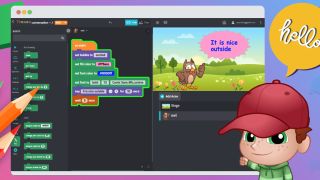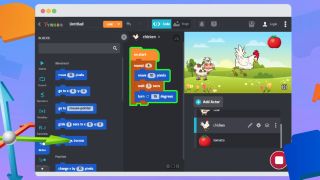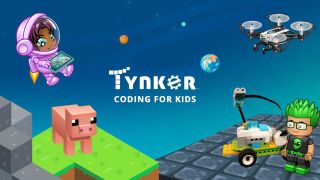Tynker is a web-based platform that helps kids learn to code from a very basic level to more complex projects.
As such, Tynker is good for children as young as 5 years old. It uses basic blocks to get started, which teaches them the logic of code, before moving onto actual coding lessons.
This is a visually attractive suite that will keep younger minds engaged by using games. Since it's available online, it can be easily accessed from most devices, making it a useful tool for both in the classroom as well as for at-home learning.
This Tynker review will explain everything you need to know about the fun coding platform and how it can be used in education.
What is Tynker?
Tynker is all about coding, from a basic blocks-based introduction to more complex HTML code and beyond -- this helps guide children on the learning path. As such, it's a fantastic option for teachers to set and have children self-guide, with minimal assistance needed.

Not only does this platform teach coding logic using blocks but it also covers a selection of major coding types including HTML, Javascript, Python, and CSS. That means students can create using Tynker as they would if building a website for real. But with this they can create a lot more, including fun games, but more on that below.
Tynker is also useful for sharing, with the ability to share programs created online. Consequently, projects can be submitted easily to teachers and students can also share with one another. In fact, it gives students access to a whole host of other creations, making it great for sparking ideas for projects.
How does Tynker work?
Tynker uses courses to teach, either with block-based learning or with code. Either way, it does this with plenty of colorful visuals as this is game-based learning. These are mostly role-playing games and feature battles that need to be fought to get to the next stage.
Students can jump right in to use the building tool, however, it requires some knowledge first, so is more for those that have covered the basics already.

The block-based coding component of Tynker is based on the MIT-developed Scratch tool, which helps to teach coding concepts at a very simple level. Go into the code courses and children are given videos to watch, programming walkthroughs to follow, and quizzes to take to test understanding.
The gaming courses have a storyline that engages students to keep them focused while also learning. Topics range from RPG games and science to cooking and space. There are some brand partnerships with the likes of Barbie, Hot Wheels, and Minecraft – the latter ideal for those who enjoy Minecraft modding and want to go deeper.
What are the best Tynker features?
Tynker is fun and, as such, works well as a way to teach. Students will self-learn as they work through the games. Using the word 'work' there is very loose, 'play' is definitely more apt. That said, they're putting in the work on learning how to code and that can be seen in the payoff when they create projects of their own.

The adaptive dashboards are a nice touch. These will change to suit the age of the student but also their interests and skill level. As a result, the platform can grow with the learner while also remaining fun and being challenging, all at just the right level to remain engaging.
Parents and teachers have access to a dashboard that shows the progress of the child or children. This features what they've been learning as well as any certificates they've managed to unlock along the way.
Lesson progression, especially for newer users, isn't clear. Tynker offers a lot of content and it may be overwhelming for some students. This works well in conjunction with guidance from teachers who can help students find the ideal next level for their ability. For those who are at the level of real code, this is less of a problem as the courses are very clear.
The open-ended coding tools are super useful as it lets students create real programs. They can make their own games or activities, limited only by their own imagination.
How much does Tynker cost?
Tynker lets you get started for free as a student, parent, or teacher. In reality this just gets you access to what's there so you can start building with a few basic tutorials but there are no lessons. For that you'll need to sign-up for one of the plans.
For teachers this is charged at $399 per year per class. School and district pricing is available on request. But you can sign up as a parent or student and pay that way, which breaks down into three tiers.
Tynker Essentials is $9 per month. This gets you 22 courses, more than 2,100 activities, and intro to block coding.
Tynker Plus is $12.50 per month and gets you 58 courses, more than 3,400 activities, all block coding, Minecraft modding, robotics, and hardware, plus three mobile apps.
Tynker All-Access is $15 per month and get you 65 courses, more than 4,500 activities, all the above, plus web development, Python and Javascript, and Advanced CS.
There are also family and multiyear savings to be had. All plans come with a 30-day money-back guarantee so you can effectively try before you buy.
Tynker best tips and tricks
Start slow
Don't start making projects right away as things can get complicated. Follow a course such as Candy Quest and make sure enjoyment is the goal. Learning will happen anyway.
Brainstorm
Use real-world classroom interactions to come up with ideas for projects before turning back to the screen to get building. This promotes social interaction, creative thought, and teamwork.
Set submissions
Have homework submissions created using coding. From a guide to a historical event to a science experiment, let the students get creative in presenting it via code.

